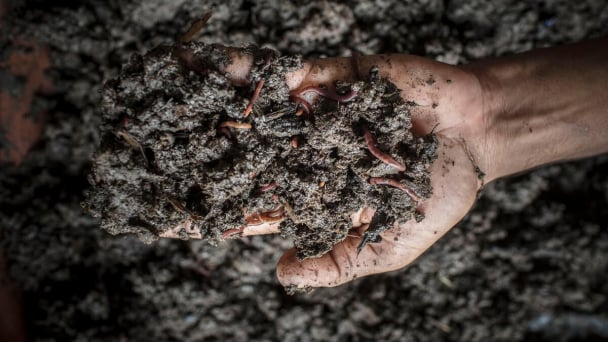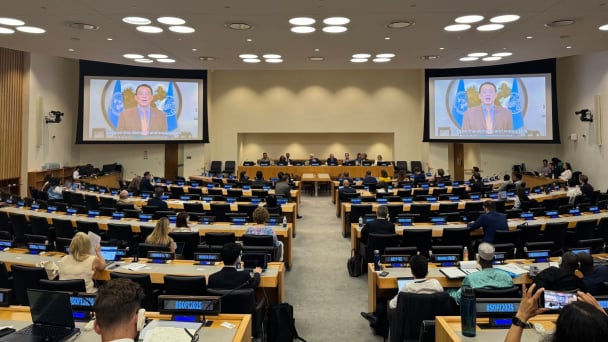August 2, 2025 | 20:52 GMT +7
August 2, 2025 | 20:52 GMT +7
Hotline: 0913.378.918
August 2, 2025 | 20:52 GMT +7
Hotline: 0913.378.918

‘The idea that we’re not assessing the actual chemicals that farmers spray is kind of ridiculous,’ Bill Freese, director at Center for Food Safety, said. Photograph: Jim Watson/AFP/Getty Images
Ingredients labeled as “inactive” in pesticide formulas are potentially poisoning the environment, crops and animals, but the US Environmental Protection Agency (EPA) has rebuffed calls to examine their toxicity and risks.
Agency rules do not require the EPA to account for inactive ingredients when it evaluates pesticide formula safety, despite the fact that industry labels dangerous substances like per- and polyfluoroalkyl substances (PFAS) as inert.
A 2017 Center for Food Safety (CFS) legal petition asked the EPA to close the loophole, but the agency denied the request this week. Many of the 18,000 pesticides approved for use by the EPA will likely remain more toxic than anyone knows, said Bill Freese, the science director at CFS.
“The idea that we’re not assessing the actual chemicals that farmers spray is kind of ridiculous,” Freese said.
CFS, along with several other organizations, filed the petition when the agency was under the direction of Donald Trump-appointee Scott Pruitt. The EPA effectively ignored the petition, CFS said, until the groups sued the agency to force it to respond.
The groups argued that inactive ingredients are added to pesticides to improve their performance by making them more toxic to the organisms they target. But that can also make a pesticide formula more toxic to the wildlife, humans and plants that are not targeted.
“People sometimes don’t make the jump from ‘more effective at killing the pest’, which sounds like a good thing, to ‘more toxic for everyone else’ which is what ‘more effective’ means,” Freese said. “What about people, butterflies or anything other than [pests like] corn rootworm?”
In its response, the EPA claimed too many pesticide formulas exist for the agency to check them all for safety. It also said the formula changes once a pesticide is sprayed and dispersed, so an evaluation of the entire product in its packaging would be misleading.
Inactive ingredients are usually added as surfactants or penetrating agents that help disperse the active ingredients or make them more absorbable. About 4,000 inert ingredients are approved for use by the EPA, along with 1,000 active ingredients, and industry is not required to publicly disclose its formulas because they are considered trade secrets.
Among dangerous “inert” ingredients public health advocates know are added to pesticide formulas are PFAS, a chemical class of which many are extremely toxic at low doses. Another, polyethoxylated tallow amine (POEA), can harm or kill amphibians at very low exposure levels.
While it is dangerous on its own, POEA is also added to Roundup, a widely used and controversial pesticide. Roundup’s active ingredient is glyphosate, which is considered a probable carcinogen, and POEA helps plants absorb glyphosate. But Freese noted that glyphosate is not as carcinogenic without the addition of POEA, and some researchers suspect the ingredients synergise to make the product more toxic.
Research also shows that POEA helps human skin absorb the chemical, but the chemical is still not considered when the EPA assesses Roundup’s toxicity, Freese said.
A similar synergistic effect is seen in a class of surfactant chemicals called organosilicones that are added to neonicotinoid pesticides, which are thought to be killing bees. Research shows organosilicones are toxic to bees in isolation and impair their learning ability, but can be deadly when combined with neonicotinoids.
CFS noted broader research that compared toxicity of active ingredients to whole formulations and found almost all were at least “several hundred times more toxic than their active principle”.
The law is clear around the issue and the EPA must consider the entire formula, say public health advocates. The petition points to Congress’s “unambiguous” language in the laws governing pesticide use stating that the product “will perform its intended function without unreasonable adverse effects on the environment”.
“The language says nothing about active ingredients,” states the CFS petition.
Meanwhile, the federal government’s definition of “pesticide” is “any substance or mixture of substances intended for preventing, destroying, repelling, or mitigating any pest”.
“The definition is right there,” CFS senior attorney Sylvia Wu told the Guardian, highlighting the word “mixture”. The public health groups are “analyzing their legal options” and may bring a suit, she added.
The EPA in recent decades acknowledged inactive chemicals can be harmful.
“The safety of the formulation, including all its ingredients, is a critical factor in whether the pesticide will perform its intended function without unreasonable adverse effects on the environment,” the EPA wrote in a 2009 rulemaking document. At the time, the EPA had proposed requiring companies to put inert ingredients on pesticide labels, but that never happened and the rule was revoked in 2014.
The EPA’s response stated that it did not need to test the entire formula because once sprayed, humans and other organisms “are not typically exposed to the intact formulation in a long-term, repeated exposure”.
Freese acknowledged the counterpoint, but added that the response is still wrong: “There’s a little truth in that, but their solution seems to be to ignore the inert ingredients all together.”
The EPA has plenty of data to show that many inactive ingredients are harmful, Wu added, and the agency seemed to acknowledge in its response that it has the authority to require more information, but it chose not to. The decision is “disappointing but not surprising”, she said.
“It’s unfortunate that they want to live in this loophole,” Wu added.
(The Guardian)

(VAN) FAO-led publication outlines structure and highlights agenda including new harmonized indicators and capacity building accessible to all.

(VAN) Energy group experts left after draft guidance on global warming plans ‘did not reflect the industry view’.

(VAN) Special Event in New York explores the causes, consequences and solutions to the 2021-2023 food price inflation.

(VAN) Ahead of Cop30, the Guardian will profile each of the top 10 emitters and their plans – good or bad – to tackle emissions.

(VAN) Scientists have detected pesticides in rivers, lakes and oceans worldwide. So what are these pesticides doing to the fish?

(VAN) Farmers’ organisations from across the European Union feel that the EU is undermining farmers throughout the Union and call for reason.

(VAN) Director-General urges bigger and deeper thinking to address youth employment challenge.